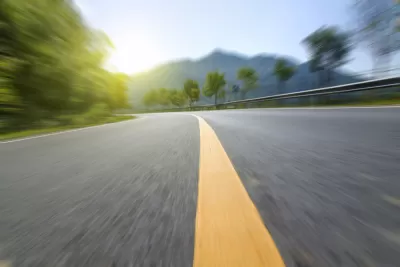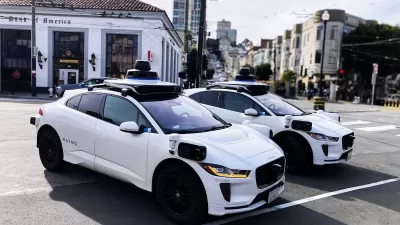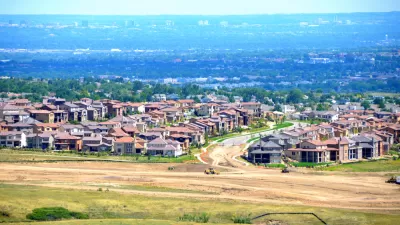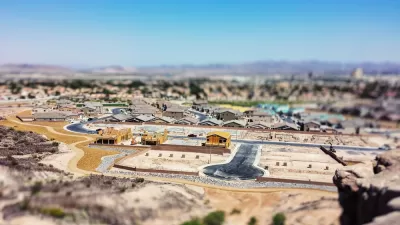Much of the focus on the potential of self-driving cars to effect change in the built environment has focused on dense, urban environments. But what is self-driving cars mostly enable continued outward expansion?

An article by Christopher Mims imagines the "weirdest thing" about a future of self-driving cars: where people will live.
Nearly everyone who has studied the subject believes these self-driving fleets will be significantly cheaper than owning a car, which sits idle roughly 95% of the time. With the savings, you will be able to escape your cramped apartment in the city for a bigger spread farther away, offering more peace and quiet, and better schools for the children.
Commuting from a "new class of exurbs" will be a luxurious affair, according to Mims, with none of the current hassles of the average commuter, particularly congestion. Mims calls on Robert McDonald, lead scientist for the Global Cities Program at the Nature Conservancy, to make the point that humans have proven themselves to spread out into sprawl as soon as their transportation modes begin to move faster.
Mims admits that he could be wrong, but not because Millennials prefer cities (an idea he debunks), but because self-driving cars could also "make cities livable in way they aren't now."
The article might be behind a paywall.
FULL STORY: Driverless Cars to Fuel Suburban Sprawl

Alabama: Trump Terminates Settlements for Black Communities Harmed By Raw Sewage
Trump deemed the landmark civil rights agreement “illegal DEI and environmental justice policy.”

Planetizen Federal Action Tracker
A weekly monitor of how Trump’s orders and actions are impacting planners and planning in America.

The 120 Year Old Tiny Home Villages That Sheltered San Francisco’s Earthquake Refugees
More than a century ago, San Francisco mobilized to house thousands of residents displaced by the 1906 earthquake. Could their strategy offer a model for the present?

In Both Crashes and Crime, Public Transportation is Far Safer than Driving
Contrary to popular assumptions, public transportation has far lower crash and crime rates than automobile travel. For safer communities, improve and encourage transit travel.

Report: Zoning Reforms Should Complement Nashville’s Ambitious Transit Plan
Without reform, restrictive zoning codes will limit the impact of the city’s planned transit expansion and could exclude some of the residents who depend on transit the most.

Judge Orders Release of Frozen IRA, IIJA Funding
The decision is a victory for environmental groups who charged that freezing funds for critical infrastructure and disaster response programs caused “real and irreparable harm” to communities.
Urban Design for Planners 1: Software Tools
This six-course series explores essential urban design concepts using open source software and equips planners with the tools they need to participate fully in the urban design process.
Planning for Universal Design
Learn the tools for implementing Universal Design in planning regulations.
Clanton & Associates, Inc.
Jessamine County Fiscal Court
Institute for Housing and Urban Development Studies (IHS)
City of Grandview
Harvard GSD Executive Education
Toledo-Lucas County Plan Commissions
Salt Lake City
NYU Wagner Graduate School of Public Service





























